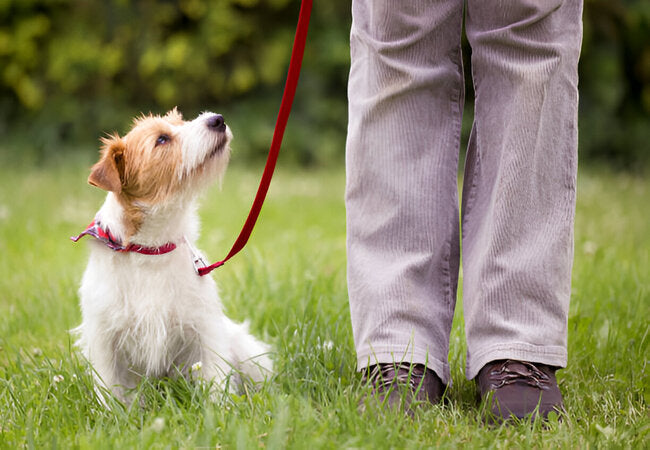These Dog Training Tips Can Help Your Pup Overcome Leash Reactivity in 2025 – Vet‑Approved Strategies 🐕🦺🎯

In this article
These Dog Training Tips Can Help Your Pup Overcome Leash Reactivity in 2025 – Vet‑Approved Strategies 🐕🦺🎯
By Dr. Duncan Houston BVSc
Leash reactivity—where dogs bark, lunge, or stiffen on a walk—can be challenging and stressful. But it doesn’t mean your dog is aggressive. In 2025, veterinary guidelines emphasize understanding the root causes—often fear, frustration, or poor social learning—and implementing gentle, positive, science-backed methods to reshape their responses. Below, you’ll find in-depth strategies for managing triggers, rebuilding confidence, and creating enjoyable walks again. Let’s walk calmly together! 🐾❤️
1. 🎯 Understand Leash Reactivity
Leash reactivity is typically an emotional response—fear, frustration, or over‑arousal. Dogs bark or lunge because they can’t flee when tense, blocked by the leash’s restriction. It’s not aggression; it’s a coping response.
2. 🛡️ Management: Safety First
Before training, reduce exposure to stressors:
- Walk at quieter times and routes.
- Turn away or cross streets when triggers appear.
- Use tools like front-clip harnesses or head halters to improve control.
3. 🧭 Set a Buffer Zone
Find the distance (“threshold”) where your dog notices the trigger but remains calm enough to accept treats. Stay just under this level during training.
4. 🎁 Counter‑Conditioning & Desensitization
Pair the trigger with a high-value reward at your dog’s threshold:
- When your dog sees the trigger, mark with a click/“yup” and immediately give a treat.
- Repeat from distance until your dog looks to you with a positive expectation.
- Slowly decrease distance over sessions—always allowing calm behavior with treats.
This rewires your dog’s emotional response: Trigger = Good Things.
5. 🎥 Train Attention on You
Teach “look” or “watch me” at low distraction and carry it through:
- Trigger sight → cue “look” → treat for focusing.
- This refocuses your dog's attention away from stressors and onto you.
6. 🔁 Emergency Handling & Redirects
When you accidentally get too close:
- Do a quick U-turn or cross-street to regain calm.
- Use a treat or verbal cue to interrupt tension.
These moves reinforce your role as safety and control provider.
7. 🛠️ Tools and Supportive Aids
- Front-clip harness/head halter: reduce pulling and improve timely direction.
- Clicker or marker words: clear, precise reinforcement helps your dog understand and anticipate rewards.
- Calming supplements/pheromones: useful during training, but not a replacement. Veterinary consult advised.
8. 💊 When to Consider Medication
If anxiety is high, veterinary behaviorist-supported medication may help reduce reactivity levels so your dog can learn effectively.
9. ✅ Vet‑Approved Training Strategy
- Assess cause: is it fear, frustration, or poor training?
- Manage environment and tools.
- Identify your dog’s buffer zone—never exceed it during training.
- Apply counter-conditioning with rewards.
- Teach “look” to build focus on you.
- Use emergency redirects before reactivity escalates.
- Progressively approach triggers over time.
- Use calming tools and medication if needed.
10. 📊 Quick Comparison Table
| Approach | What It Addresses | Owner Action |
|---|---|---|
| Management | Safety, stress reduction | Choose calm walks, use harnesses, cross routes |
| Buffer Zone | Threshold awareness | Keep distance—reward before dog reacts |
| Counter‑conditioning | Fear/frustration response | Trigger → treat; repeat with decreasing distance |
| Attention cue | Refocus | Teach “look”, apply at mild triggers |
| Emergency redirects | Prevent escalation | U-turn/cross & treat immediately |
| Support tools | Control & calm | Harness, clicker, pheromones |
| Medications | Severe anxiety | Vet prescribed for training support |
11. 📱 Ask A Vet App 2025 Integration
- 📹 Upload walk videos—experts assess leash tension, buffer zones & triggers.
- 🧩 Get individual desensitization/reward plans based on your dog’s threshold.
- 💬 Live coaching—adjust strategies, tools, and training pace.
❤️ Final Thoughts
Leash reactivity isn’t a sign of failure—it’s a behavior shaped by emotion and environment. With thoughtful management, positive reinforcement, tools, and professional support, your dog can learn calm, happy walks. In 2025, let’s empower our pups—with knowledge, patience, and compassion. 🐶🌟
Need step‑by‑step help? Visit AskAVet.com or download the Ask A Vet app for custom behavior plans, live expert coaching, and progress tracking tailored to your pup’s needs.






